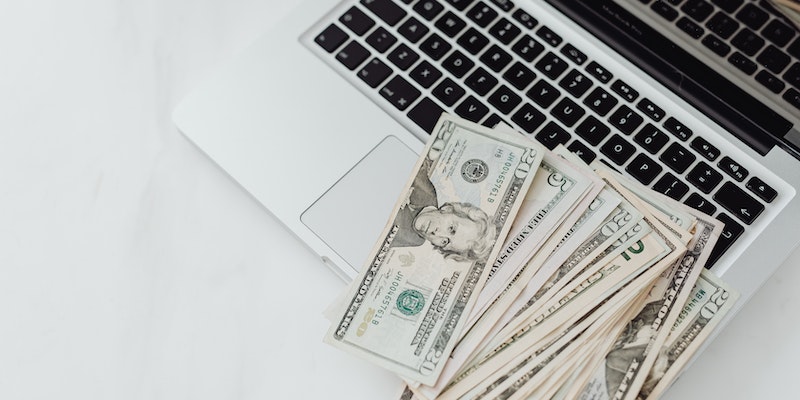Every second the markets are open gives traders the chance to trade, whether they are trading stocks, futures, or forex. However, a high-probability trade does not always present itself each second. Trading the markets can increase your investment capital, but it can also be harmful if done incorrectly.
Having a set of criteria to assess each potential deal is one of the keys to effective trading. Put each prospective trade you are considering through a five-step test so you can only make trades if they align with your trading strategy and have a fair chance of paying off the risk you are taking. Whether you are a day trader, swing trader, or investor, apply this 5-step trading test.
It’ll take some time at first, but once you get used to it, it just takes a few seconds to determine whether a trade passes the test and whether you should trade or not. This article will outline a five-step process to help you decide whether a trade is profitable.
1: The Trade Setup

Finding a trade setup is the first and foremost step in the five-step test. A specific collection of primary conditions that point to a possible trading opportunity is known as a trade setup. You can use technical and/or fundamental analysis to quantify a trade setting.
For instance, a trend must be present if you trade according to trends. Your trading plan should specify what constitutes the tradable trend. You can prevent trading when the trend isn’t present by doing this. To determine whether a trend is present or how strong/weak it might be, use the Average Directional Index (ADX) indicator. Consider the “setup” to be the main reason for your trading.
Technical analysis means analyzing charts and employing indicators to spot market patterns and trends. In order to assess a company’s growth potential, fundamental analysis may be used, which involves analyzing the company’s revenue, cash flow, and earnings. It may also be used to examine macroeconomic data to determine where the whole economy is in the present cycle.
2: The Trade Trigger
The next stage is to watch for a trade trigger after you have found a trading setup. The trade trigger is a particular event or indication confirming the trade setup. If you utilize technical analysis and trade trends or momentum, a trade trigger can be when a stock exceeds a critical resistance level.
If you use fundamental research, a trade trigger could be when a company reveals positive earnings reports. In addition, a trade trigger occurs when price, indicators, or chart patterns signal you to enter the market per your trading strategy.
3: The Stop Loss
Calculate your stop loss level before placing a trade. The price at which you will sell your stock if it falls to that level after you enter is known as a stop loss. If the trade doesn’t turn out as planned, a stop loss is a way to limit your losses.
Look at the chart’s support levels and the probable downside risk for the trade to establish your stop loss level. Your stop loss helps you measure your position sizing depending on how much capital you’re ready to lose if taken out of the trade. Simply put, stop loss specifies your price action risk for the trade.
4: The Price Target

Next, you need to set a price goal for the trade, along with considering your stop loss level. A price target is the price at which you intend to sell your shares profitably. Look at the prior resistance levels on the chart and the possible upside for the trade to determine a price target.
A profit target depends on something quantifiable rather than being set at random. Targets are provided by chart patterns based on the pattern’s size. Trend channels identify areas where a price had a history of reversing; for example, if you plan to buy around the channel’s bottom, set your price goal close to the top.
Setting a price goal may protect your investment and prevent holding onto a stock for a long time. Your profit objective establishes the reward potential and quantifies your expected maximum price action profit for trade at entry.
5: The Reward to Risk
Evaluating the reward to risk ratio is the last but not least step in the five-step trading test. This ratio is calculated by dividing the trade’s possible profit by its potential loss. Make an effort only to enter trades where the profit possibility exceeds 1.5 times the risk. For instance, if the price approaches your stop loss and you lose $100, you should gain $150 or above if the estimated price is attained. You can decide if a trade is worthwhile by comparing the reward to risk ratio to the probability of profit or loss.
Other Considerations
When making trades, there are additional crucial factors to consider besides these five steps. These include factors affecting the trade, such as market conditions, current affairs, and company-specific issues. Most importantly, stay updated on market news, earnings reports, and other events that may have an impact on your trades so that you may change your strategy as required.
The Bottom Line
As a trader, you have to make sure the conditions are appropriate for using a specific trading strategy. Create a trigger that alerts you when it’s time to take action. Establish the stop loss as well as a target before deciding whether the risk is worth the potential return. If so, make the transaction; if not, search for a better opening. Consider additional elements that can influence your trading, and take further action as necessary.
Even though it could seem time-consuming at first, once you figure out your approach and become accustomed to the processes, going through the full list should only take a short while. Ensuring that each trade passes the above five-step test is always worthwhile.




